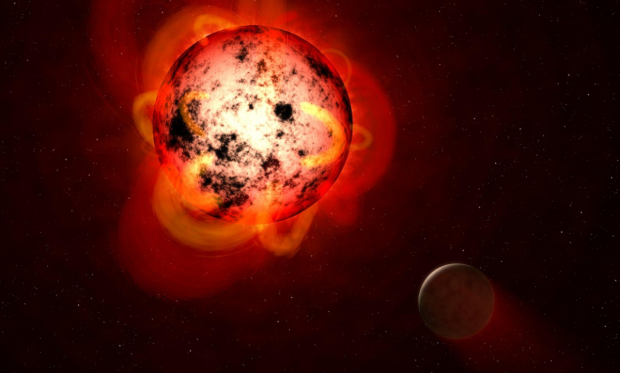A new study has detailed a discovery with the most common type of star in the universe, red dwarf stars, and how the relationship between these stars and the planets orbiting around them may make it much easier for astronomers to identify planets that can support life.
The new study published in the Astrophysical Journal Letters focuses on a planet named GJ 1252b, which orbits a red dwarf star approximately 45 light-years from our Sun. Astronomers honed in on this planet and learned that it doesn't have an atmosphere due to its proximity to its red dwarf star. GJ 1252b orbits its companion star twice every one Earth day, and because it's so close to its host star, it's exposed to large amounts of heat that makes it impossible to maintain a viable atmosphere for life.
An example of a similar situation that is occurring a little closer to home is Mercury and how the Sun is making it extremely difficult for the planet to maintain its atmosphere. Mercury does have an atmosphere, but it's extremely thin, as the Sun is quite literally blasting it away with its radiation. A similar scenario is happening to GJ 1252b, but on a much more extreme level. For instance, GJ 1252b has an estimated surface temperature of 2,242 degrees Fahrenheit, which is hot enough to melt gold, silver, and copper.
"The pressure from the star's radiation is immense, enough to blow a planet's atmosphere away," said Michelle Hill, UC Riverside astrophysicist and study co-author.
So, why is this important? Researchers believe that since red dwarf stars are so common throughout the universe, with 5,000 of these stars just in Earth's solar neighborhood, that astronomers could rule out many exoplanets orbiting these stars for hosting life as they would lack an atmosphere from their proximity to their host star/surface pressure. Essentially, researchers would be able to cross many exoplanets off the "could possibly host life" list, making the search for potentially habitable worlds much less time-consuming.
Notably, exoplanets that are orbiting red dwarf stars at a further distance still have the possibility of having an atmosphere and, therefore, life, so it isn't like astronomers are simply ruling out any exoplanet orbiting a red dwarf star.
"If a planet is far enough away from an M dwarf, it could potentially retain an atmosphere. We cannot conclude yet that all rocky planets around these stars get reduced to Mercury's fate. I remain optimistic," said Hill.
In other space news, Hubble has been used to capture the birthplace of stars. More on that story below.



